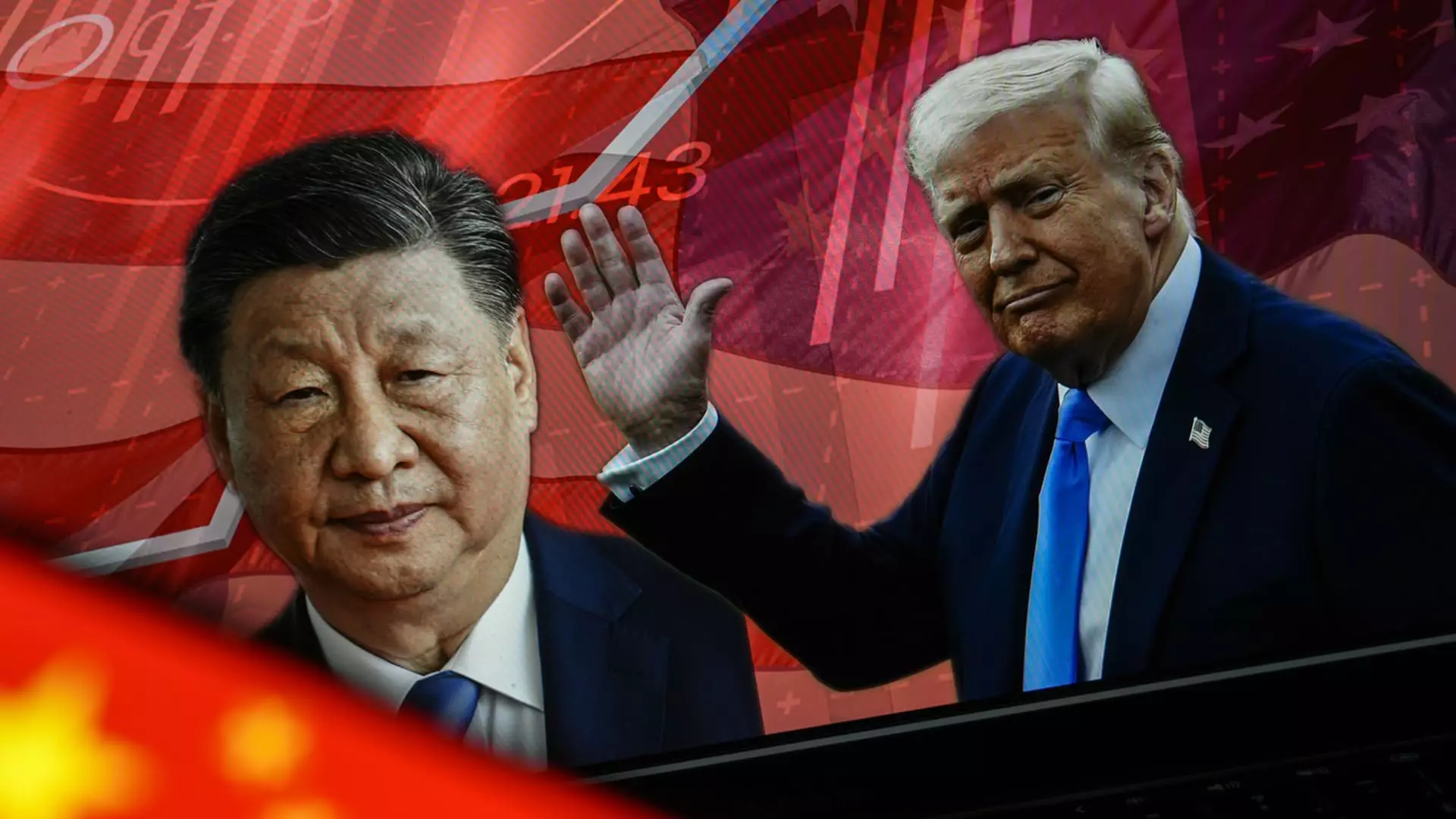The ongoing trade conflict between the United States and China has escalated into a catastrophic cycle of mutual retaliation that can only be described as destructive. Rather than resolving their differences through constructive dialogue, both nations seem committed to inflicting economic pain on each other while the working class bears the brunt of these misguided policies. Instead of considering the broader implications of their actions, both the Trump administration and the Chinese government persist in a tit-for-tat strategy, escalating tariffs and non-tariff measures in ways that only exacerbate tensions. This scenario underscores the inadequacy of the current methods employed by both sides, necessitating a dramatic re-evaluation of strategies if they are to avoid further decay in relations.
China’s Strategic Pivot: Beyond Tariffs
With President Trump imposing outrageous tariff increases—some as high as 245%—it was only a matter of time before China sought alternative avenues to counterattack. The Chinese government has chosen to focus on the services sector, an area where the U.S. has long enjoyed a significant trade surplus. This shift signifies an analytical pivot away from punitive tariffs toward more insidious measures involving regulatory scrutiny and soft power tactics targeting American interests. For instance, the addition of U.S. companies like DuPont and Google to an “unreliable entity” list signals a more calculated effort to undermine American corporations operating within China—a move designed to amplify existing fears among U.S. businesses.
Recognizing the critical importance of rare earth minerals to advanced technology sectors, China has initiated increased export controls, effectively tightening access for American companies in industries pivotal to the national security interests of both nations. This escalation not only inflicts immediate economic harm but also fosters long-term distrust, further severing the fragile ties between the two economies.
The Service Sector: A New Battleground
As part of its broader strategy, China has indicated intentions to restrict American service firms, particularly legal and consultancy sectors. This represents a shift from traditional trade disputes to a battleground involving intellectual property and market access—domains where the U.S. has historically leveraged its advantages. Importantly, if China enacts stricter regulations, the ramifications could ripple far beyond immediate trade figures; a decline in U.S. services exports could result in decreased cultural and educational exchanges between the two nations, effectively severing vital ties that have historically enriched both sides.
The risks associated with this move can’t be overstated. Major American firms are facing the real threat of operational limitations in a rapidly diversifying global market. This would not only jeopardize the financial stability of those businesses but also have cascading negative effects on the broader U.S. economy. The confluence of national security concerns and economic interests necessitates a reevaluation of both China’s and the U.S.’s approaches to these exchanges.
The Symbolic Weight of Retaliatory Measures
China’s announcement to restrict the import of American films and reduce travel to the U.S., while seemingly minor in economic terms, carries profound symbolic weight. These actions reflect a strategic framing of the narrative surrounding the U.S.-China relationship, one that seeks to sway public opinion against the U.S. in favor of highlighting potential benefits of domestically produced Chinese content. By targeting high-visibility sectors such as aviation and entertainment, China aims to mount pressure on political figures, stirring nationalistic sentiments while simultaneously weakening American influence on the cultural front.
The realities faced by the U.S. entertainment and educational sectors, from declining Chinese student enrollments to fewer tourists, cannot be underestimated. An estimated $24 billion could evaporate if Beijing maximizes restrictions on travel and exchanges, further entrenching the divide and jeopardizing America’s status as a global cultural hub.
Prospects for De-escalation: An Uncertain Path Ahead
As the diplomatic landscape continues to fracture, the prospect for productive negotiations grows increasingly distant. Analysts propose that the time for a calculated recalibration of strategies is now; unilateral tariffs have hardly produced the desired outcomes and have instead led both nations toward a path of systemic divergence. The prospect of U.S. firms such as Apple and Tesla facing regulatory harassment and operational limitations serves as a stark warning about the undeniable perils of intractable trade policies.
For this reason, it is imperative that both nations seek common ground in addressing the economic challenges they face. Engagement rooted in mutual respect, rather than armed confrontation through tariffs and sanctions, is essential. The future of U.S.-China relations hinges on a departure from hostile posturing and a commitment to rebuilding trust in a manner that acknowledges the complex interdependencies of today’s global economy. The looming question remains: will both nations muster the political will necessary to pivot towards this more constructive and pragmatic approach, or will they continue to spiral deeper into a self-inflicted economic abyss?


Leave a Reply